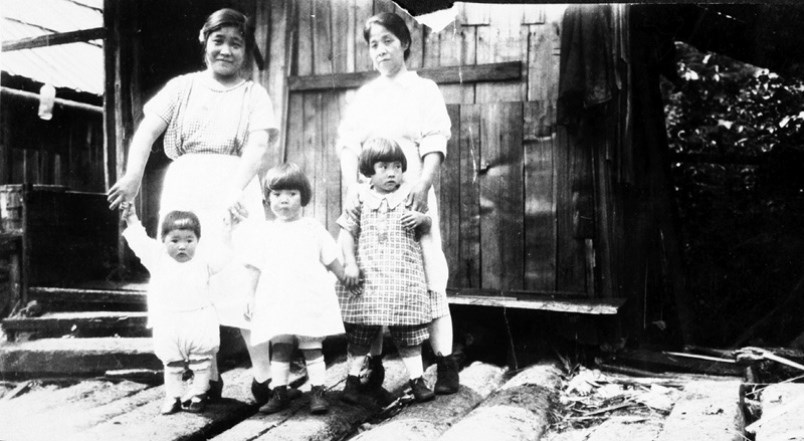The forest hid the past.
It had been about 60 years since Canada interned Japanese-Canadians, herding thousands of men and women into the Hastings Park Livestock Building. Hundreds of Japanese communities were damaged, including an unincorporated city of about 50 in the Seymour Valley.
The red cedars and Western hemlocks of the Seymour Valley had grown a lot since 1942, sprouting over and around and through artifacts whose very existence was almost lost to history.
Bob Muckle, an archeologist and a Capilano University instructor with quick laugh and a taste for Dead Man Ale, is the reason that Japanese community is part of the historical record.
Muckle had been part of archeological expeditions across Canada, the United States and Egypt. He’d largely eschewed fieldwork in the 1990s to better balance his family and professional lives but in 1999 he got a call from a Metro Vancouver employee who had an idea: What if we outfitted kids with metal detectors in the Lower Seymour Conservation Reserve and, “let ‘em run amuck and dig up things?”
The idea seemed, “totally illegal and unethical,” Muckle recalls with a chuckle. But it was interesting. He decided to explore the area.
Metro Vancouver, then known as the Greater Vancouver Regional District, would provide logistical support and Muckle would draw a field crew from his students.
He knew there’d be Euro-Canadian residences from as far back as the late 19th century but there was “no indication that we’d ever find anything Japanese,” he notes.
They surveyed a swath of land about halfway between Rice and Seymour lakes. On first look it was indistinguishable from the rest of the forest but the area’s vegetation told a tale of interruption, that maybe something had been there.
They started digging.
Using trowels and mesh screens, Muckle and his students dug two-by-two metre squares in a patch of earth along the Seymour River.
For about two years they found little more than Euro Canadians. But little by little, a Japanese logging camp came out of the dirt.
There were cans of tobacco, boot polish and baby powder, pocket watches, an inkstick used for sketching and painting, a little game piece that might’ve been used for the board game Go. There was evidence of a dozen buildings. There was window glass and nails, suggesting there were cabins that would’ve been comfortable for small families.
There were even pieces of an Eastman-Kodak Bulls-Eye camera.
“None of it was visible on the surface,” Muckle remarks.
While it was likely an Eikichi Kagetsu-established logging camp from 1920 until about 1924, Muckle provides evidence that suggests the camp was a community until 1942.
The reason the camp was so hard to spot was partially because of the growth of the forest, but also perhaps because of a deliberate attempt to hide it.
In an essay, Muckle notes the “deliberate destruction of shelters,” as well as what looks like an attempt to hide a Victoria Steel Range stove which was found far from any other household and cooking items. The community’s inhabitants might have hid valuable possessions prior to internment in an effort to elude looters, Muckle reasons.
But even in the 1920s and ’30s the camp likely existed as a hidden refuge for Japanese people who wanted to live their traditional way of life free from racism, according to Muckle.
There would have been fresh vegetables, a ready water supply, and the nearest bus stop in Lynn Valley would have been an hour’s hike away, he writes.
The province officially commemorated the site for its significance to British Columbians of Japanese descent in the spring of 2017.
The District of North Vancouver recently awarded Muckle with a Community Heritage Award, citing his work in the Seymour Valley as well as his bringing hundreds of students from kindergarten to Grade 12 along on his archeological excavations.
“I was thrilled with it,” Muckle says of the award.
The past has had a hold on Muckle since he took a random archeology course while attending Douglas College in New Westminster. Despite being a self-described mediocre student, he had a spark for archeology.
“When I found out that you could actually make a career at it, I was all in,” he says.
As a professor, Muckle says he’s always aspired to be the teacher he wanted to have.
“I structured – and continue to structure – all my teaching based on how I wish I was taught.”
That means explaining to students that they work in the rain and the freezing cold. He recalls setting up one camp in Seymour that was sandwiched between a bear to the north and a bear to the south.
“If you’re not comfortable working knowing there’s bears around, don’t apply for the field school,” he advises.
Muckle is planning the next field season, which he hopes to launch in the spring of 2019. In the meantime he’s got “a couple thousand artifacts” to deal with and a book to write.
The working title is: The Seymour Valley Archaeology Project, although he promises he’ll “come up with something more exciting later.”
He’s also hoping to be granted permission to excavate what he believes might be the oldest skateboard park in Canada.
“It lies buried in West Vancouver,” he notes.
While he’s been denied permission to excavate, Muckle says he hasn’t given up hope of digging just below the surface again.
“There is nowhere I would rather do archeology that on the North Shore,” Muckle muses. “I’ve pretty much got my dream job.”



